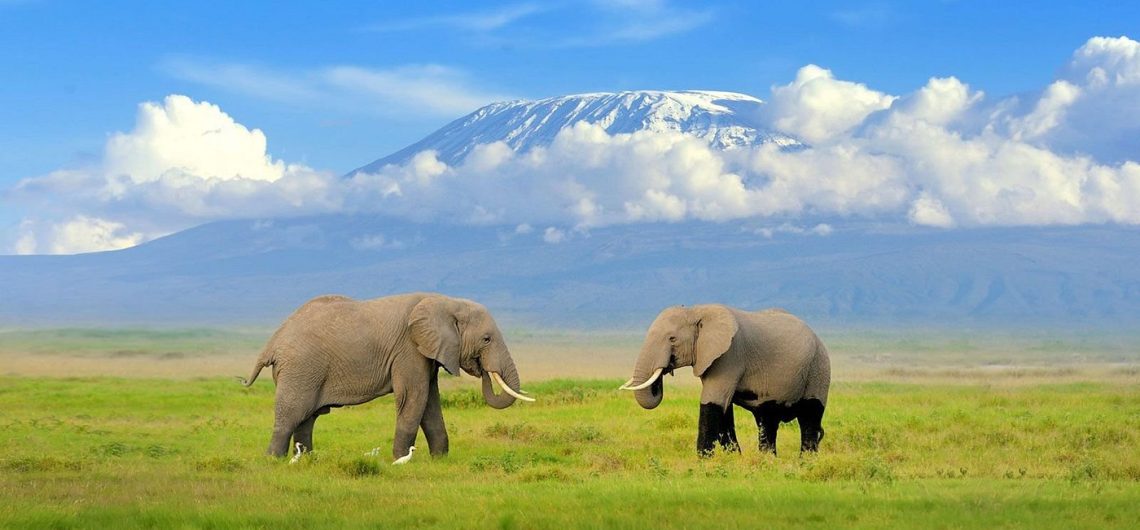Many people aspire to capture the iconic image of the Roof of Africa, with the majestic mountain serving as a breathtaking backdrop to a foreground bustling with elephants. However, only a few climbers are fortunate enough to seize this opportunity for themselves. The reason behind this scarcity is quite evident – Tanzania lacks the quintessential African landscape, the savanna adorned with acacia trees, in close proximity to the mountain. Hence, one must venture into Kenya to achieve that coveted shot. Unsurprisingly, this has always been a source of slight irritation for me. Firstly, a considerable number of individuals mistakenly believe that Kilimanjaro is located in Kenya, much to the dismay of Tanzania. Therefore, it pains me to admit that while Kilimanjaro is indeed in Tanzania, it is best admired from its northern neighbor’s vantage point.
Secondly, what bothers me further is that, despite being the creator of everything else in the guide book, I was never responsible for capturing the cover photo. I took great pride in my work, yet the book’s publisher, Trailblazer, insisted (and rightly so) that the book’s cover should showcase the ‘classic’ image of Kilimanjaro. Their rationale, which I agree with wholeheartedly, was that it would significantly boost sales. Consequently, for the first four editions, we had to resort to purchasing a photograph since I had never visited Amboseli.
- See our 3 day Amboseli National Park, Kilimanjaro view safari
- 3 days Amboseli safari
- 3 Days Tsavo West, & Amboseli Kenya Safari
- 4 Days Tsavo East, Tsavo West, & Amboseli Safari
- 5 Days Amboseli and Masai Mara Safari
So where is Amboseli, and what’s it like?
The plains that border the northern side of Mount Kilimanjaro are considerably drier compared to those on the southern side. In fact, the Maasai word “amboseli” translates to “dust devil”, which accurately depicts the dusty mini tornadoes that sweep across the park’s surface. This description gives a glimpse into the extreme dryness of the land along its northern edge. However, despite the aridity, there is still some water trickling down from these northern slopes. Through an intricate network of underground channels, this water emerges on the Kenyan plains as expansive swamps. These swamps serve as a magnetic attraction for various wildlife species. Notably, Amboseli National Park is home to approximately 900 African elephants, along with other impressive animals such as wildebeest, giraffes, lions, monkeys, zebras, hyenas, and antelopes. These creatures are the epitome of fame and popularity in Amboseli National Park. It is important to note that only a portion of the park consists of swampland. Surrounding these wetlands is a semi-arid bushland, characterized by acacia and fever tree vegetation. This classic East African landscape adds to the park’s allure and makes it an ideal location for a captivating cover photo.
You still have to be lucky
Regrettably, capturing the perfect photograph remains mostly a matter of chance. In our recent expedition to Amboseli for the fifth time, the majestic mountain only revealed itself unclothed during the early morning hours. As the day progressed, it became bashful and concealed itself behind a shield of clouds. Even when the skies were clear, a combination of evaporation, dust, and heat haze typically veiled the summit of Kilimanjaro. This seems to be the usual occurrence, which perhaps elucidates why travel blogs often discuss spotting Kilimanjaro from Amboseli, yet fail to provide photographic evidence. I have since been informed that August offers the best opportunity for an unobstructed and visually stunning view of the mountain. This may indeed be true. However, I should not be astonished by my lack of success during my visit to Amboseli. Whenever I find myself in Moshi and witness the mountain in all its glory, I gleefully rush to the nearest rooftop to capture a few shots. Why? Well, it is simply because such occasions are rare and fleeting. Therefore, banking on a two-day safari in Amboseli to yield the ideal cover photo was always a risky bet.
Information about what to expect when visiting Amboseli National Park
Amboseli is most easily arranged from Kenya, but there are a few Tanzanian safari companies that offer trips to Kenya parks as well. The price for a private two-day trip for one person starts at around US$250-300, which includes a night at a lodge just outside the park gates. The best time to visit is during the dry season from July to October, when the park’s swamps provide one of the few water sources in the region. This attracts a lot of game to the park, and the thinner vegetation makes it easier to spot wildlife. Additionally, there are fewer mosquitoes during this time. However, the downside is that it is also the busiest time, resulting in higher lodge prices. There are various accommodation options available, ranging from basic tented camps near Kimana Gate, the main entrance in the east, to luxury Tortilis Camp located on its own private conservancy south of the main reserve. Another entrance to the park is Meshanani Gate, which is 45 minutes away from Namanga on the western side of the park.
![]()


Comments